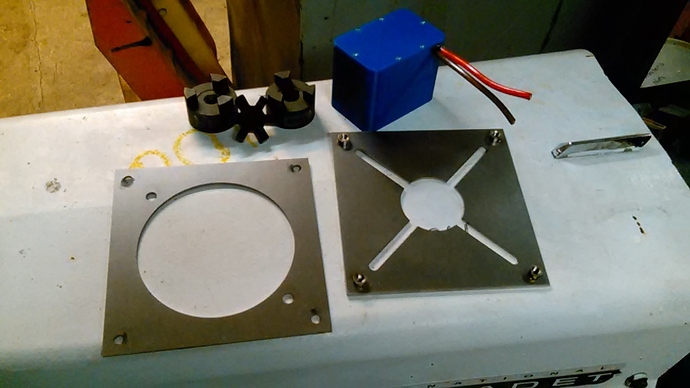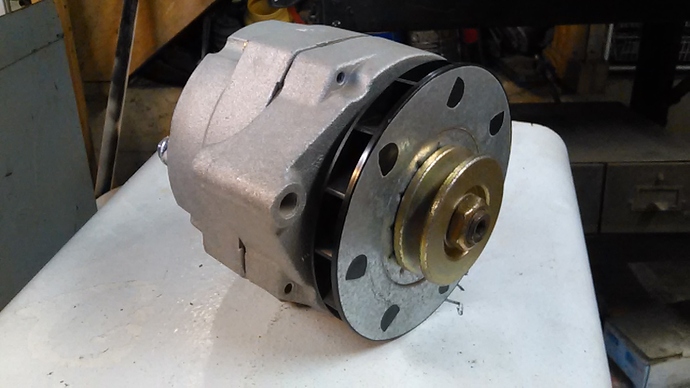Well, I’ve been burning up scratch paper on math equations and they vary in complexity but this one is the simplest one that I found on Maxwell’s web page. It doesn’t account for RC so I would consider it a less than minimal capacitance.
WARNING: I don’t know what I’m doing here… Just winging it with some equations I found on the Internet…
Csys ------- is stack capacitance
dt ---------- is discharge time
Imax ------ is Power / Vmin
Imin ------- is Power / Vmax
Iave -------- is (Imax + Imin) / 2
W ---------- is Watt
f ------------ is farad
Vmin ------ is the lowest voltage the inverter will work at
Vmax ----- is the highest alternator voltage but not higher than the highest inverter input voltage
I recall that some alternators can produce 80A and charge at 14.2Vdc. But lets be optimistic and call it 14.5Vdc.
So:
W = A x V
W = 80 x 14.5
W = 1160
So if we had a a extremely efficient inverter we could call out a 1000w inverter. For the sake of calculating that’s what we will do. The clone engine may not be able to supply the needed power at this level but it might be possible to have two engine/alternator units powering the inverter/supercapacitors.
Bellow are the specs for a Xantrex (sounds like some kind of ED medication) inverter:
Item 806-1210
Input V = 10.5 to 15.5Vdc
W = 1000W but some times 900X is written.
W surge = 2000W but some times 1800 is stated
It would be a nice advantage to modify the alternator regulator to put out 15Vdc because that would increase the usable capacity of the stack. The usable power in the stack is only from 10.5 to 14.5Vdc, ouch! All the power below 10.5vdc can not be used in this application but that stored energy can be used for another application like charging a brainiack phone, led lighting or a blower fan. The specs state that the inverter has an over-voltage shut down at 15.5Vdc. This would allow a simple over-voltage protection scheme with the addition of an interposing relay before the supercapacitors. This would need to be shunted during start up.
Back to the math…
2200W = surge
2000W is the inverter surge but I added 200W for inefficiency. I’m also assuming that the surge will only last one second. On the plus side the alternator should contribute some current during the surge.
dt = 1 second (that’s how long I’m guessing the surge will last)
Vmax = 14.5
Vmin = 10.5
Imax = 2200 / 10.5 = 210
Imin = 2200 / 14.5 = 152
Iave = (210 + 152) / 2 = 181
Csys = Iave x (dt / (Vmax - Vmin))
Csys = 181 x ( ( 1 / (14.5 - 10.5 ) )
Csys = 181 x ( 1 / 4 )
Csys = 181 x 0.25
Csys = 45f
I was planning to use seven capacitors. So:
7 x 45 = 315f supercapacitor.
With another equation I came up with about 600f supercapacitor but another equation came up with about 300f. The equation that considered RC came up with the 600f but I just guessed at the internal resistance of the stack, the R part of RC…
Now after all that time put into the math I’m considering Maxwell’s super duper 3000f with very low internal resistance!!! No need to do much math at that capacity but they would cost about $$$$500… !!!
Ouch,
Jeff




 so that’s why this showed up.
so that’s why this showed up.